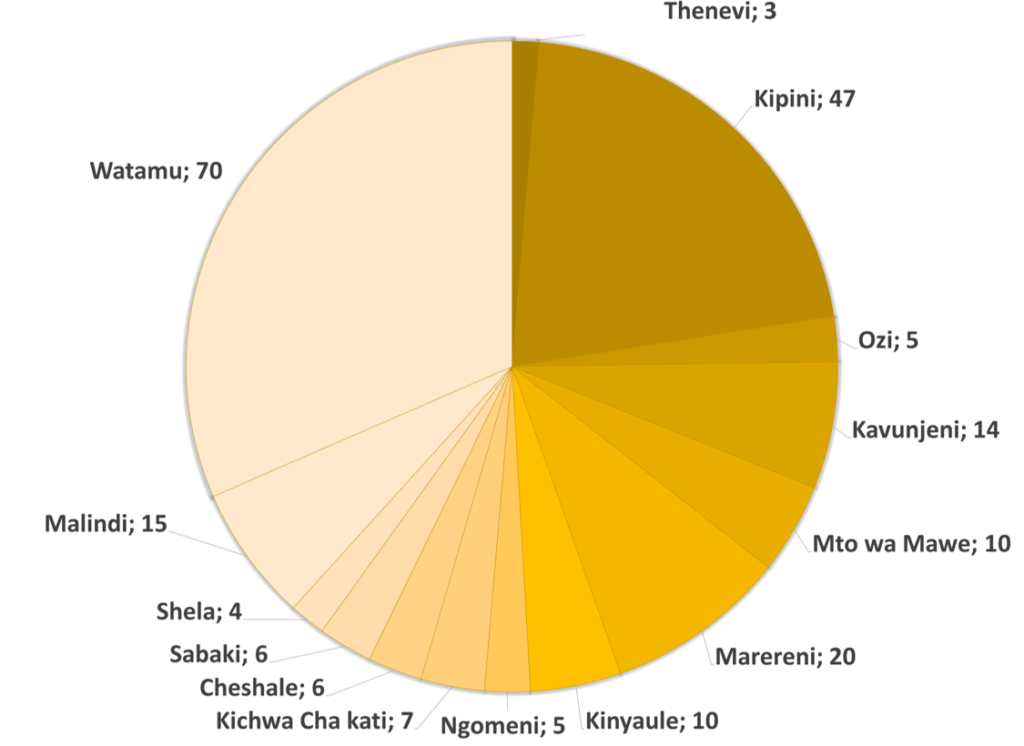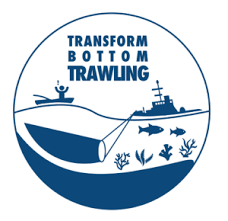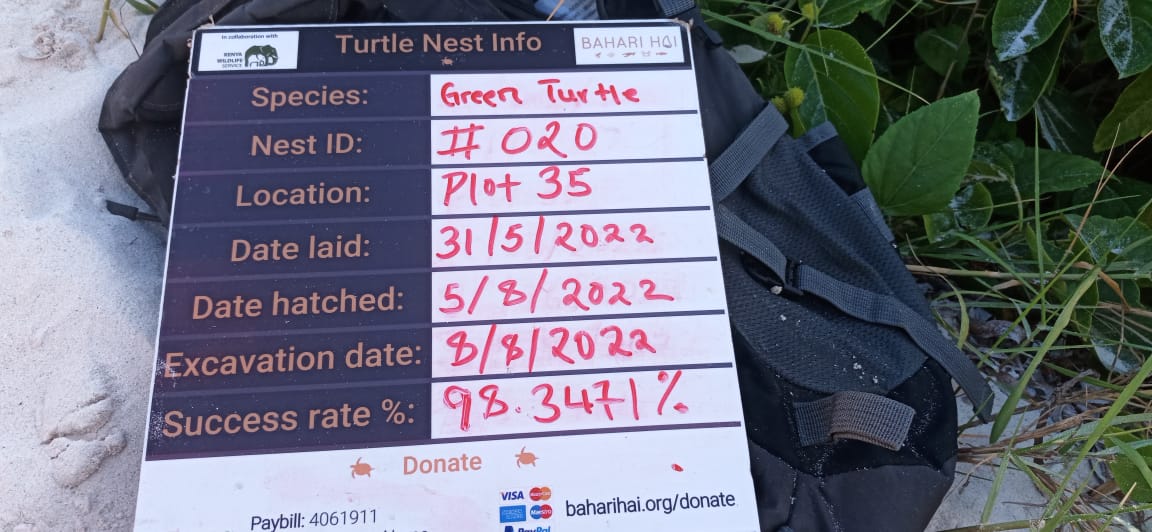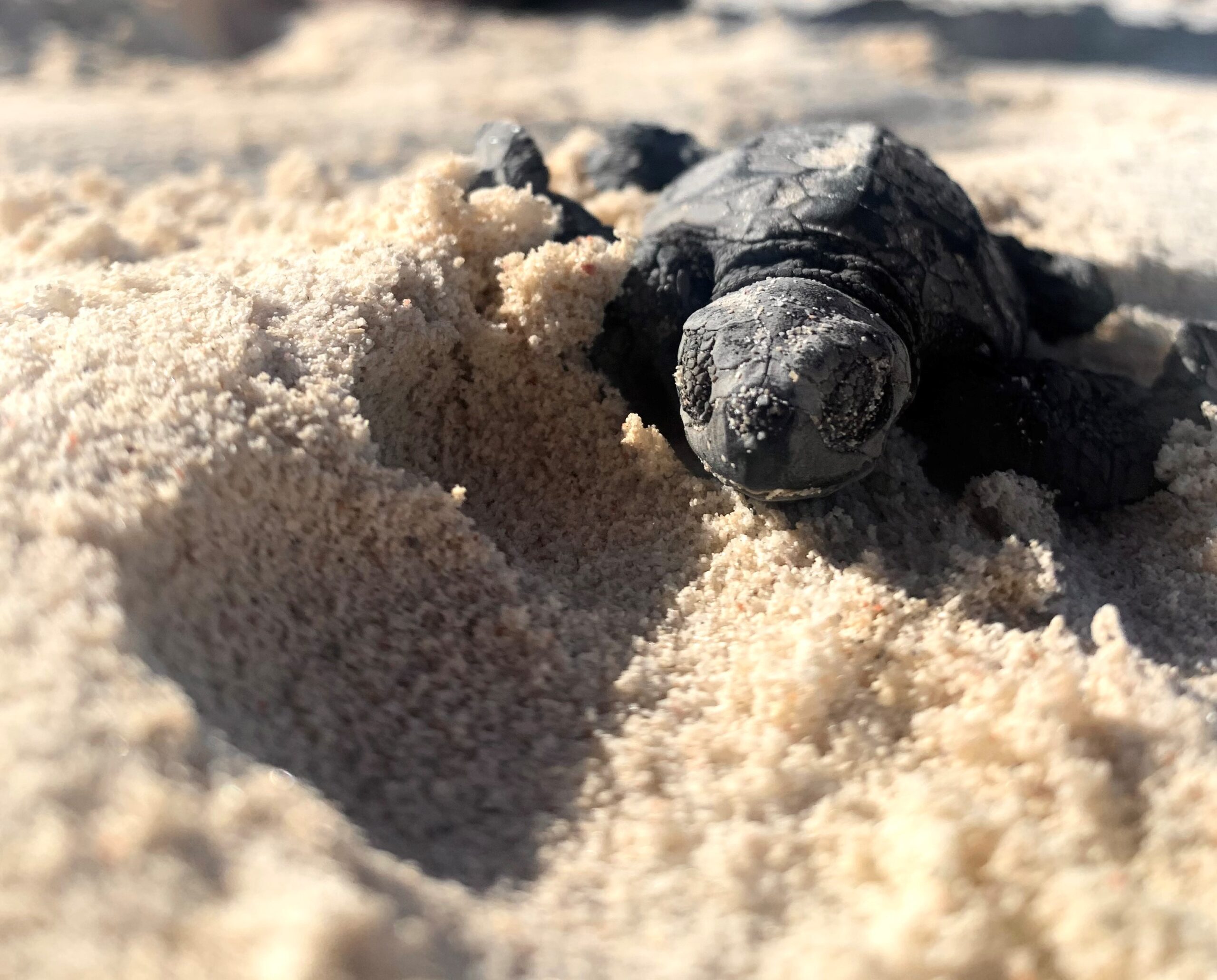
The Ungwana Bay and surrounds region is a key section of Kenya’s coastline that has never received sufficient attention for turtle conservation efforts.
One can go as far back as 1974 when researcher Jack Fraser stated the region to be the “most significant turtle nesting area in Kenya, with possibly several hundred turtles a year”.
Bahari Hai team members conducted initial turtle conservation assessments in the region in 2008 and there have been sporadic efforts by various organizations in localized areas since then, however, few initiatives have been sustained.
The potential is known, but not realized.
We know that the region is visited by all 5 turtle species found in Kenya. Three of which are endangered and two are critically endangered. Bahari Hai, in collaboration with Kenya Wildlife Service, Kenya Fisheries, local specialists, and with support from Actionsgemeinschaft Artenschutz, conducted an expedition to obtain up to date information that can inform efforts to improve sea turtle and marine conservation in the region
View the full report – click here
PROJECT GOALS FOR PHASE 1:
To estimate the current level of turtle nesting activities, the overall nesting potential of the region, as well as the state of turtle conservation efforts within the Ungwana Bay and surrounds section of Kenya’s coastline, to inform improved protection of sea turtles. This would be achieved through the following:
- Determine turtle nesting suitability of beaches, along the entire stretch of coastline – as at Nov 2021
- Identify existing and potential turtle and/or marine conservationists (groups and people)
- Obtain approximate baseline data of turtle nesting productivity and the prevalence of turtle poaching
- Develop a sustainable strategy and plan for Bahari Hai and partners to monitor the turtle nesting activity in future
- Identify at least two sites in the target area where existing conservation groups or individuals are ready to receive assistance to improve or scale-up their turtle conservation efforts. These sites would then be the focus for the next phases of the project.
- Better understand the state of fisheries and fisheries management for the area
SUMMARY
The Ungwana Bay and Surrounds region has a significant amount of coastline suitable or potentially suitable for turtle nesting. Importantly, less than half a percent of coastline was unsuitable due to human influence, something we should aim to maintain in the future.
It was clear that all the assessed Turtle Conservation Groups and those interested in sea turtle conservation require more support (financial and non-financial) including technical sea turtle conservation skills training.
State of turtle nesting beach suitability for Ungwana Bay & surrounds (%)

Annual turtle nests per site

222
approximate average number of turtle nests per year for total assessed area
FISHERIES MANAGEMENT
There was evidence of day and night fishing along the full stretch of the assessed area, in both shallow and deeper waters.
Shallow waters: Mainly occupied by line and net foot-fishers.
Deeper waters: Fishing taking place in the deeper waters, beyond the reefs. Canoes are used here and boats with engines are used to go further out.
Monofilament net fishing is the most common fishing practise followed by line and long-lines.
We observed that fish storage infrastructure is not available. At all prominent fish landing sites from Marareni northwards, there were active natural solar fish drier pens constructed. Fishermen complained that their morning fish harvests are often mixed with rotten fish as a result of staying in the fishing nets for many hours before they are harvested. All bad fish must be dried in the sun and the fisherman prioritize selling the fresh ones if they can find a buyer.
As expected, there was a lot of illegal fishing gear use in this northern region. Prior to the project we knew that the strong law enforcement by the KWS Watamu Warden Dadley Tsiganyiu has resulted in the ‘bad fisherman’ using illegal gears to move out of waters surrounding Watamu and fish north and south of his jurisdiction.
A serious and intensive sensitization exercise with the fisherman followed by strong law enforcement is needed to improve the compliance of legal and sustainable fishing gear use for Ungwana Bay and surrounding area.

Fish trawling – 5 Priority concerns
- A 2015 study assessed the Malindi-Ungwana Bay as ecologically degraded, when considering fish sizes, predator proportions and trophic characteristics as ecological indicators. The volume of shrimp landings declined by more than 70% over 10 years of the study period, which could potentially be linked to increased fishing pressure.
- There are major issues with bycatch, although some is landed for sale locally, most has low commercial value and is discarded. Studies suggest that a higher proportion of the catch is non-target finfish species than shrimp with only 22% of the total annual catches being prawns.
- Furthermore, there is concern about the high incidences of sea turtle bycatch from trawlers; A trawler survey conducted estimated that at least 3 turtles are caught in trawl nets per fishing day although this varied greatly with season. Recent studies have described commercial prawn trawlers as catching significant amounts of shark bycatch.
- There are conflicts between fishermen and trawlers resulting from excessive trawl bycatches otherwise targeted by the artisanal fishers, loss or damage of artisanal fishing gear (e.g. set nets), and perceived environmental degradation. Artisanal fishers found it difficult to compete with the cheap fish supplied to local markets by trawl bycatch.
- Marine and fishery decision-makers need to urgently tackle the rising number of turtle mortalities along Kenya’s coast due to the incursions of the bottom-trawling fleet as the cause of these mortalities. Greater transparency around the ownership, movements and licensing of these fleets needs to happen, as well as further efforts to ensure compliance with existing requirements to use Turtle Excluder Devices in these fleets.
*List created by coalition of stakeholders along Kenya’s coast, compiled by Fauna & Flora International
View the full report – click here
For more information or to discuss further please Contact Us



